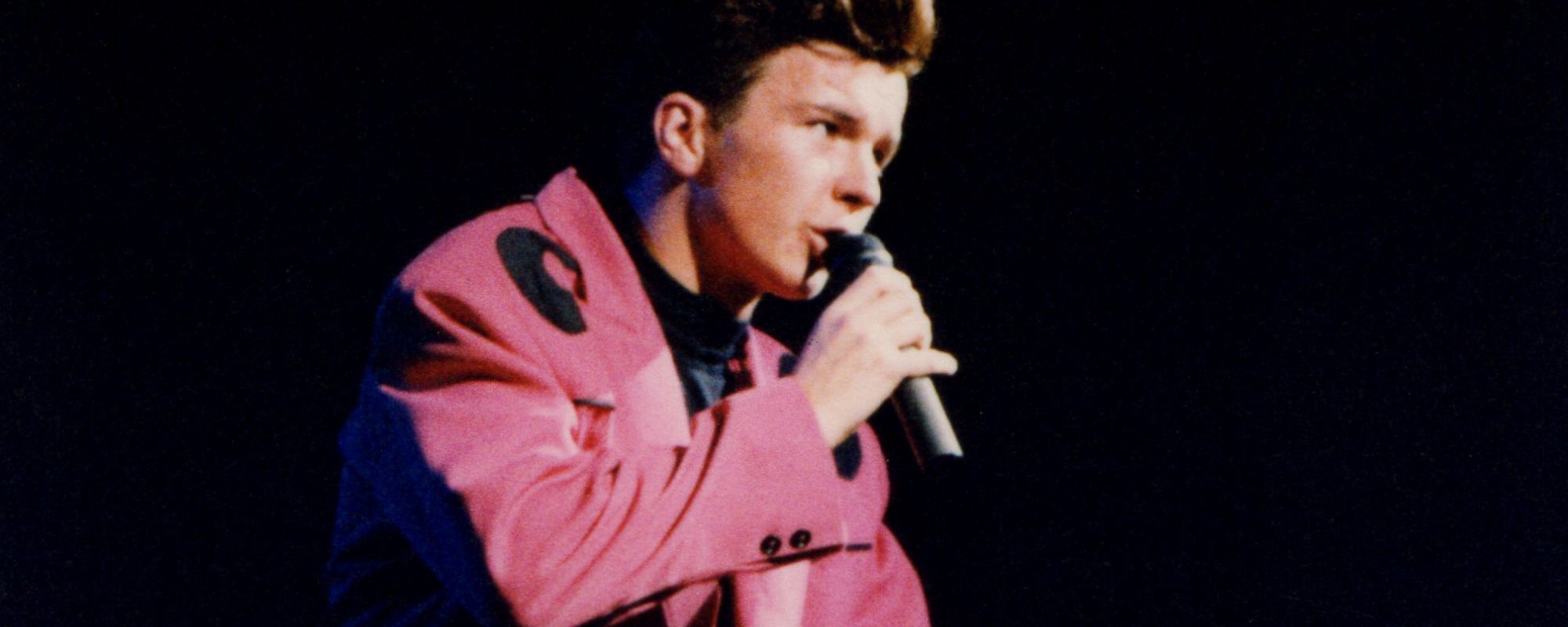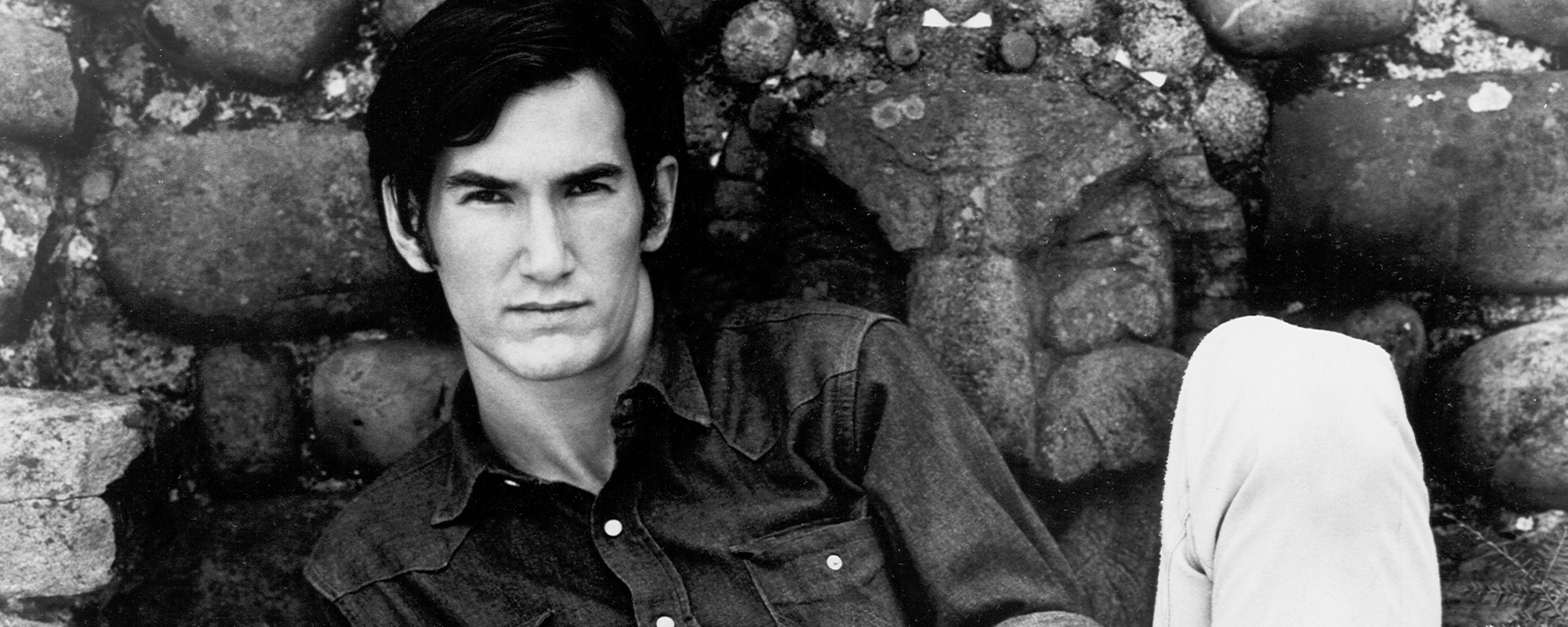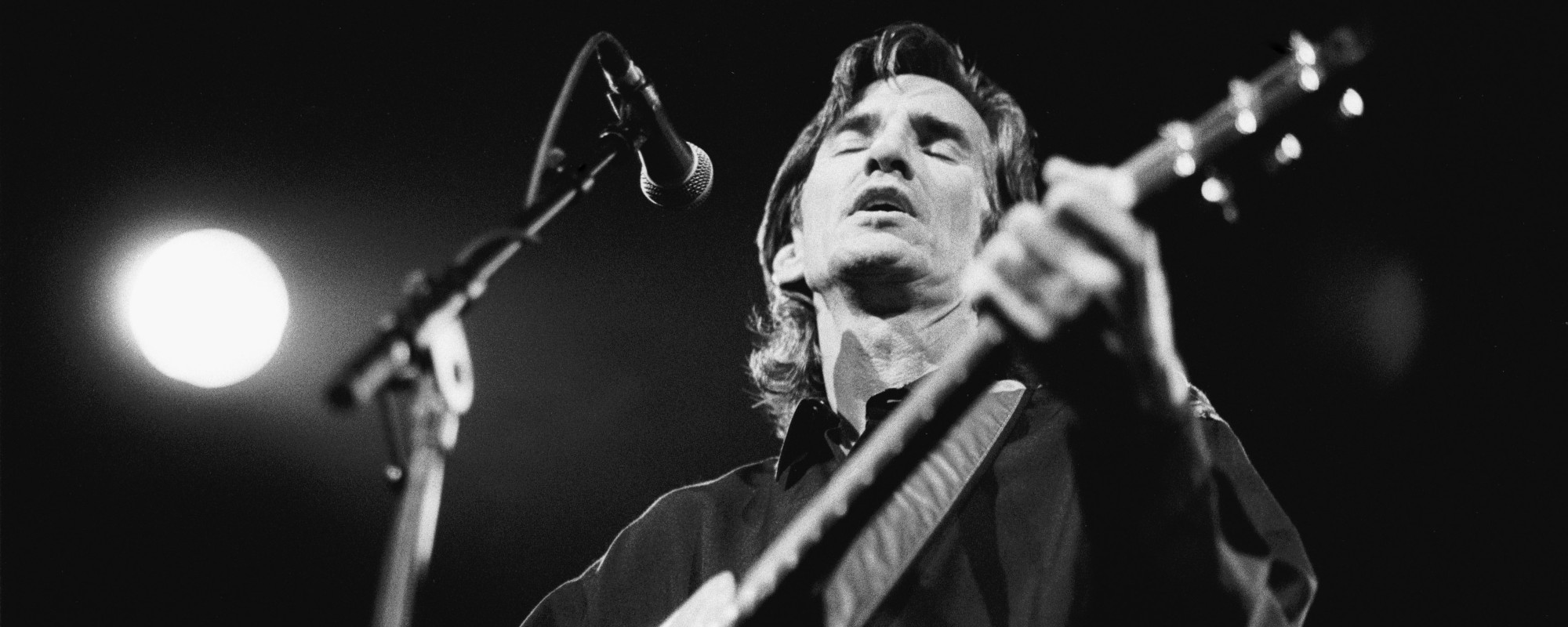When Townes Van Zandt released Flyin’ Shoes in 1978, it marked his first album in five years. He began working on an album in 1972 with producer Jack Clement, with the working title Seven Come Eleven. However, a dispute over unpaid studio bills between Clement and the singer’s manager, Kevin Eggers, led to Clement erasing the tapes. A collection of rough mixes from the deleted sessions was later made available in 1993, called The Nashville Sessions. Following a move to Tennessee, Townes Van Zandt finally returned with Flyin’ Shoes, which features the cautionary folk tale “Snake Song”.
Videos by American Songwriter
Cloistered in a cabin just outside of Nashville, Van Zandt’s spiraling addiction led to even more gaps between records, further intriguing his cult following. Nine years passed before the follow-up At My Window in 1987. He continued to perform live, and his shows featured a combination of forlorn ballads, humor, and timeless poetry. Sadly, the sets occasionally ended with the singer collapsing onstage.
Van Zandt knew his vices and seemed to enjoy the glow of a candle burning at both ends. It fueled the writing while chiseling away at his health. And the inescapable addiction may explain Van Zandt’s slithering metaphor in “Snake Song”.
Sweet Beguiling
There’s a long history of imparting adjectives like “evil” to snakes. But these limbless reptiles are neither wicked nor sinister. They just do what snakes do.
Still, the idea of something slippery, like slopes and snakes, means losing control. And Van Zandt’s addiction was the kind of risk he couldn’t avoid. Townes Van Zandt’s “Snake Song” opens with a first-person account of a snake warning its enemies. It’ll bite, so beware.
“Well, you can’t hold me, I’m too slippery
I do no sleeping, I get lonely
You can touch me if you want to
I got poison, I just might bite you.”
The following verse mentions shedding skin, like the many versions of ourselves we leave behind. This implies a darker side of the human condition. Discarding the “wrapped hatred” like it never happened. “Dies behind me.“
But the verse begins with how the future “don’t try to find me.” The hopelessness of no tomorrow. Moving through life in a zero-sum game of kill or be killed. “Not a drop of venom wasted.”
“Well, the future he don’t try to find me
Skin I been through dies behind me
Solid hollow, wrapped in hatred
Not a drop of venom wasted.”
Returning to Van Zandt’s heroin and alcohol addiction, the narrator ends with an ominous promise: “I’ll be here when you start sinking.”
The ‘Sky Blue’ Version
Another version of “Snake Song” is included on Townes Van Zandt’s posthumous 2019 album Sky Blue. The 11-track album was recorded by journalist Bill Hedgepeth in 1973. They captured rough performances at Hedgepeth’s studio in Atlanta, Georgia. No itinerary. No plan. Just the musical whims of Van Zandt.
It’s fitting for a journalist to document Van Zandt in this way. A snapshot of the elusive artist in his prime. A conversation with himself using his songbook as a soliloquy.
The Isobel Campbell and Mark Lanegan Cover
Van Zandt’s songs became popular through covers. In 1983, Willie Nelson and Merle Haggard reached no. 1 on the Billboard Hot Country Songs chart with their take on “Pancho and Lefty”.
In some cases, the covers introduced new fans to Van Zandt. Mark Lanegan and Isobel Campbell recorded “Snake Song” for their 2010 album Hawk. They exposed indie rock listeners to an outlaw country legend.
Lanegan, known for his work with Screaming Trees and Queens Of The Stone Age, recorded three albums with Campbell, who began her career with Belle & Sebastian. Their first collaboration, Ballad Of The Broken Seas, was shortlisted for the Mercury Prize in 2006.
The duo’s haunting version of “Snake Song” recalls the folk and blues of Lead Belly. Lanegan famously covered Lead Belly’s rendition of “Where Did You Sleep Last Night” on his 1990 solo debut The Winding Sheet. It features Kurt Cobain and precedes Nirvana’s anguished performance of the song on MTV Unplugged.
Inner Demons
The years between 1968 and 1972 were the most prolific of Townes Van Zandt’s career, giving him near-mythological status among songwriters. But commercial success still eluded him. And though he was admired by everyone from Bob Dylan to Steve Earle, he existed on the outskirts of Americana music.
“Snake Song” symbolizes the inner demons of the impulsive troubadour, the freewheeling recklessness, pain, and drunk wit of a visionary songwriter.
But those very demons also destroyed him.
Photo by Frans Schellekens/Redferns













Leave a Reply
Only members can comment. Become a member. Already a member? Log in.